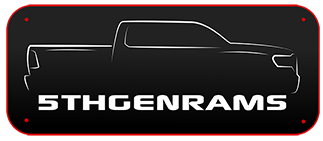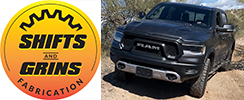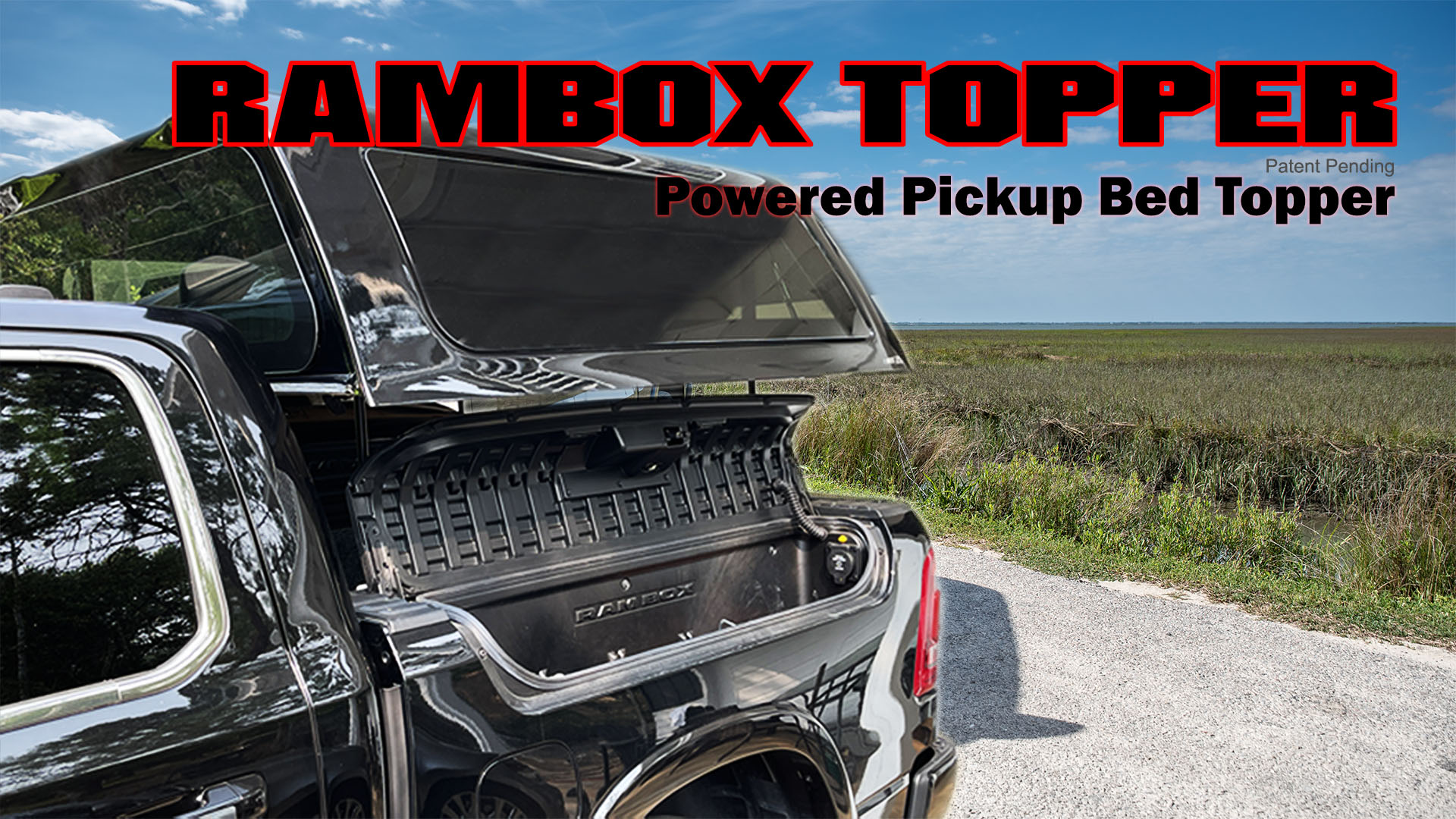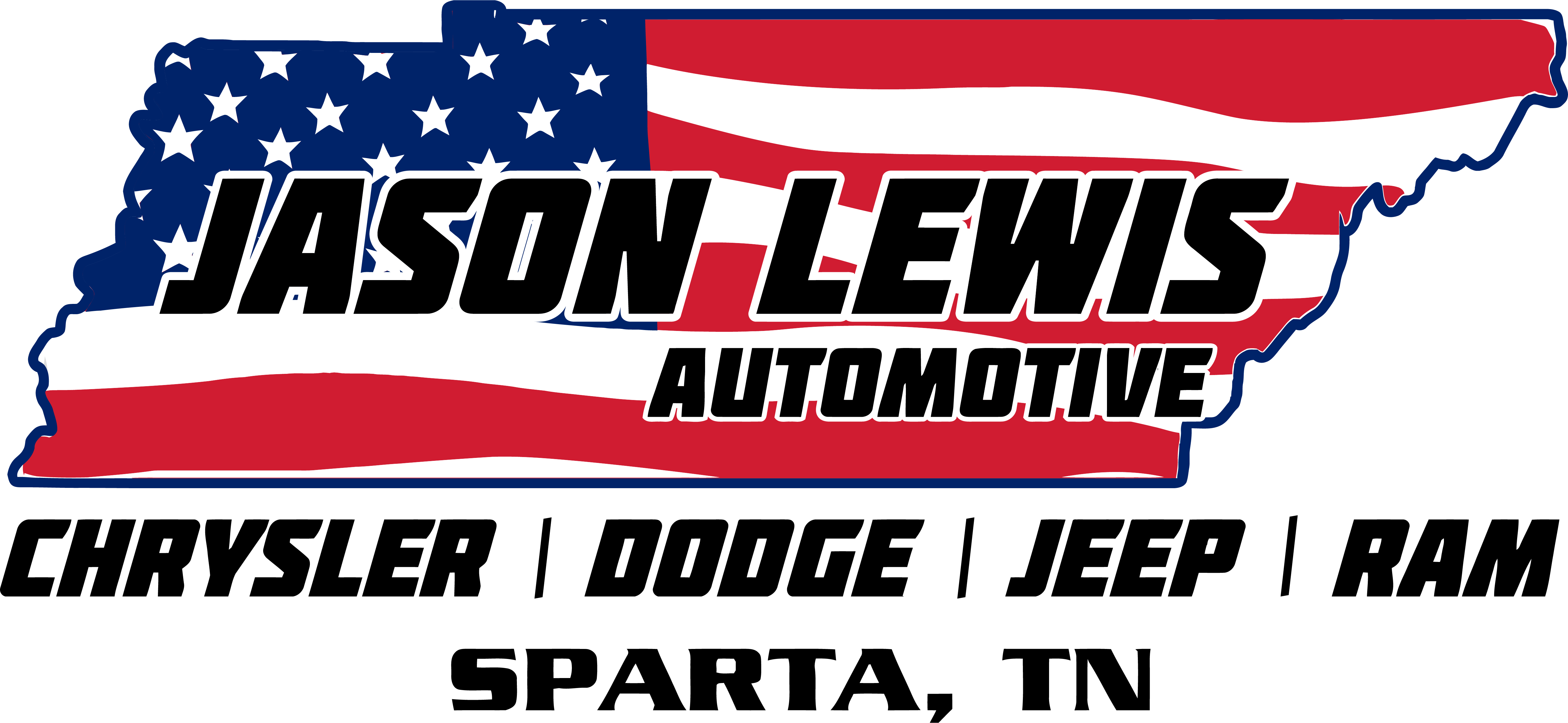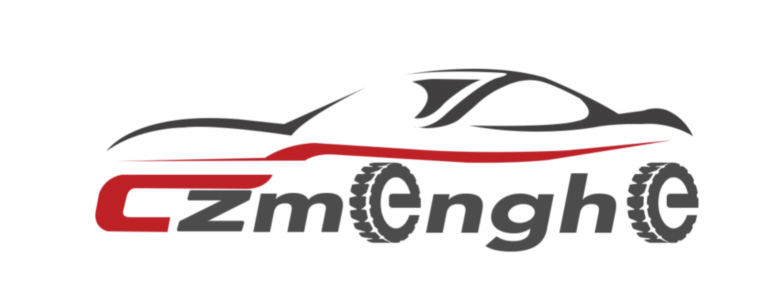Obviously notMIT wasn't enough???
5thGenRams Forums
You are using an out of date browser. It may not display this or other websites correctly.
You should upgrade or use an alternative browser.
You should upgrade or use an alternative browser.
The wait is over! Best in class torque!
- Thread starter Doc
- Start date
This new ED is a mild hybrid I believe like the e torque... also they mention in video that it’s available with either 26 gallon tank, or a 33 gallon
Sent from my iPhone using Tapatalk
You're right...he said 33 gallons. That would be a change from the last one. It didn't seem to have any eTorque bits under the hood. I would expect it won't, if for no other reason cost. FCA has a history here; its MultiAir engine with electronically controlled hydraulicly actuated intake valves. However, they left off direct injection, presumably because of cost.
Note, this engine probably fits my requirements and I haven't ordered yet.
Just to note, torque is meaningless, only the horsepower counts.
Let me illustrate in two ways:
1) The torque peak is at 1600 rpm, down from 2000 rpm in the previous version. However, when accelerating hard, the engine will swing between 2600rpm and 4000rpm. The old engine had a 4800rpm redline but it shifted way before that with a power peak at 3600 rpm.
The thing that counts is power under the curve, not torque.
2) If given that a car making 260hp at 60mph weighting 5000lb is traveling at 60mph, a person can calculate the rate of acceleration with no other information. No gearing information. No wheel diameter. No torque.
However, if told it was making 380 lb-ft of torque at that speed, without knowing the engine speed, a person would need to know all the gear ratios and wheel diameter. In effect, they would be calculating the horsepower.
The advantages of a diesel stem from regulating engine power by controlling the amount of fuel rather than creating an obstruction limiting the amount of air consumed. It also has a higher compression ratio and the fuel has 30% more energy per unit volume.
The high compression also helps engine braking. Range is dramatically increased requiring fewer fuel stops. That may save more time than going 10mph faster up a hill. When refueling, the diesel pumps are often on islands designed for tractor-trailers making them much easier to maneuver into with a trailer.
The low-pressure mechanical fuel pumps of yesteryear diesels often belched unburned fuel. Now, they operate at nearly 30k psi, are electronically controlled, and use knock sensors for smooth operation. Glow plugs have become dramatically more functional, assisting in combustion throughout operation rather than being a cold start device.
The 395hp V8 is way more powerful. Because of the turbo that will drop a little at higher altitudes, but still is significant. Motor Trend got 6.1s 0-60 and 14.7 sec @ 93.7 mph in the quarter-mile. For the last diesel, the numbers were 9.0s and 16.9@81mph (Car and Driver). TFL was over 1 minute slower on their uphill trailer pull, the engine straining all the way. 20hp won't significantly change that.
This is lost on 99% of people on truck forums. I am glad someone is around to say it.
Not true at all. In the gen 4 trucks, the ED could tow just under what the Hemi could. The ED has 10 lb-ft of torque more than the Hemi, but somewhere around 130 less HP. I think it's clear that the torque is what makes the ED the little monster that it is.
My brother has the ED (gen 4) and I have the Hemi (gen 5). His truck will climb the same hills without downshifting and feels very strong compared to my hemi which is shifting more. Part of that will definitely be rear end differences.
Torque gets you off the line and allows you to pull. HP is more important for "racing" or passing at freeway speeds, and passing on the freeway is where my Hemi will finally feel stronger than my brother's ED, the ED seems to run out of grunt there quicker.
I agree with the rest of your post (diesel simply having more energy per liter etc etc), but drive the ED and Hemi back to back, I think you're realize that the torque spec is very important.
Same thing with the Ford turbos, they produce a lot of torque down low and feel quite strong.
Look up tractive effort. It the actual force you are applying to the pavement to move you forward. HP is another way of expressing tractive effort. The engine with greater HP can apply more force to the road. That force is used to overcome air resistance, overcome rolling resistance, and overcome gravity on a hill. Its also used to accelerate a mass(truck and trailer)
The ED may have been rated to tow nearly the same weight, but hook an 8000 lb trailer to both trucks and point it up a 7% grade and see which one maintains speed better. The Hemi. Even at 11,000' with a 30% loss in power due to air density, it still outpulls the turbocharger ED. It has more HP which means it produces higher tractive effort.
At 20mph, the EcoDiesel with the 3.55 rear is at its 3600rpm power peak, then 240hp now 250hp. The 5.7L Hemi V-8 with the 3.92 is right at its torque peak, 4000rpm, making just under 310hp. I don't have dyno sheets with the hp curves, but I'd imagine the Hemi is matching the diesel around 15mph.
Now try to hold 70mph on a 3%-6% grade towing a 7000+ lb trailer with 60+ sq. ft of front area (my load, a car hauler, weighs 9000 lb and has 70 sq. ft of frontal area). The Hemi can handle it but without a big margin. The EcoDiesel will struggle, probably dropping 5mph-10mph below the target. At least that is my experience with a 300hp Suburban 2500 where the engine was being held right around the power peak by the transmission. It is also what is shown in the TFL video I posted.
Notice in the new TFL video on the EcoDiesel, FCA hasn't let them release a road test yet, but in the picture, they are towing a boat not a box.
However, although unless the driver normally keeps their foot planted to the floor, in street driving without a trailer the diesel will seem fine. The increased range is a very nice thing to have. If they give it the 33gal tank. Last time it had a smaller tank taking away some, but not all, of that advantage.
This. A diesel has the advantage of milling along at a lower RPM. However, once you hit a hill and you need 260 or more HP, all bets are off.
I have a Jeep Liberty CRD tuned to 200hp and 370 ft-lbs of torque. It will lug my 5000 lb travel trailer along on flat ground at 2000 rpm in 5th gear. As soon as I get to ~3% grade I am foot to the floor just to hold speed. Anything steeper than 3% and its losing speed and by 7% grade I am barely maintaining 35mph in 2nd.
Like I said, test drive them both back to backThe ED has peak torque at like 1600 rpm. It comes on fast and hard and stays there. The Hemi has to use twice the RPM to build to peak torque. When it up shifts, it loses power again until it reaches 3500 to 4000 rpm. The ED doesn't feel that power loss between shifts, it just pulls and pulls. So you can feel the power loss and gain with the Hemi as it revs up and down, with my brother's ED the power feels more linear; it comes on and stays on though it begins to drop off at high speeds which is where the Hemi has the advantage.
It does not stay there. Look at any of these diesel torque curves and they are actually very peaky. You only have a 1500 rpm or so operating window before the torque curve craps the bed. The last one is the new 3.0 Duramax curve vs a 6.2L GM. Notice that by 3300 rpm the 6.2L is outpulling the 3.0.
If that isn't enough proof then just go watch the TFL trucks videos of any of the small diesels(EcoD, PSD, 2.8 Dmax) and see how all of the V8's and V6 counterparts outperform them up the IKE.
Attachments
Last edited:
Ok so that's why semi's 80k lbs that have 350 HP and 2000 ftlbs torque are worthless then huh?This is lost on 99% of people on truck forums. I am glad someone is around to say it.
Look up tractive effort. It the actual force you are applying to the pavement to move you forward. HP is another way of expressing tractive effort. The engine with greater HP can apply more force to the road. That force is used to overcome air resistance, overcome rolling resistance, and overcome gravity on a hill. Its also used to accelerate a mass(truck and trailer)
The ED may have been rated to tow nearly the same weight, but hook an 8000 lb trailer to both trucks and point it up a 7% grade and see which one maintains speed better. The Hemi. Even at 11,000' with a 30% loss in power due to air density, it still outpulls the turbocharger ED. It has more HP which means it produces higher tractive effort.
This. A diesel has the advantage of milling along at a lower RPM. However, once you hit a hill and you need 260 or more HP, all bets are off.
I have a Jeep Liberty CRD tuned to 200hp and 370 ft-lbs of torque. It will lug my 5000 lb travel trailer along on flat ground at 2000 rpm in 5th gear. As soon as I get to ~3% grade I am foot to the floor just to hold speed. Anything steeper than 3% and its losing speed and by 7% grade I am barely maintaining 35mph in 2nd.
It does not stay there. Look at any of these diesel torque curves and they are actually very peaky. You only have a 1500 rpm or so operating window before the torque curve craps the bed. The last one is the new 3.0 Duramax curve vs a 6.2L GM. Notice that by 3300 rpm the 6.2L is outpulling the 3.0.
If that isn't enough proof then just go watch the TFL trucks videos of any of the small diesels(EcoD, PSD, 2.8 Dmax) and see how all of the V8's and V6 counterparts outperform them up the IKE.
silver billet
Spends too much time on here
- Joined
- Apr 18, 2019
- Messages
- 2,945
- Reaction score
- 2,896
- Points
- 113
This is lost on 99% of people on truck forums. I am glad someone is around to say it.
Look up tractive effort. It the actual force you are applying to the pavement to move you forward. HP is another way of expressing tractive effort. The engine with greater HP can apply more force to the road. That force is used to overcome air resistance, overcome rolling resistance, and overcome gravity on a hill. Its also used to accelerate a mass(truck and trailer)
The ED may have been rated to tow nearly the same weight, but hook an 8000 lb trailer to both trucks and point it up a 7% grade and see which one maintains speed better. The Hemi. Even at 11,000' with a 30% loss in power due to air density, it still outpulls the turbocharger ED. It has more HP which means it produces higher tractive effort.
This. A diesel has the advantage of milling along at a lower RPM. However, once you hit a hill and you need 260 or more HP, all bets are off.
I have a Jeep Liberty CRD tuned to 200hp and 370 ft-lbs of torque. It will lug my 5000 lb travel trailer along on flat ground at 2000 rpm in 5th gear. As soon as I get to ~3% grade I am foot to the floor just to hold speed. Anything steeper than 3% and its losing speed and by 7% grade I am barely maintaining 35mph in 2nd.
It does not stay there. Look at any of these diesel torque curves and they are actually very peaky. You only have a 1500 rpm or so operating window before the torque curve craps the bed. The last one is the new 3.0 Duramax curve vs a 6.2L GM. Notice that by 3300 rpm the 6.2L is outpulling the 3.0.
If that isn't enough proof then just go watch the TFL trucks videos of any of the small diesels(EcoD, PSD, 2.8 Dmax) and see how all of the V8's and V6 counterparts outperform them up the IKE.
You can't get tractive effort without torque. It's part of the equation. Anyway this is definitely heading outside my wheel house, but my two main points are:
1) Torque is definitely not meaningless like the OP of this mini-thread posted last page. Why do you think the 3/4 and 1 tons have 900 lb-ft and more, but only half the HP? They pull like stink, but only have slightly more HP than my Hemi does.
2) We seem to agree that the ED will run out of steam quicker at higher speeds. But in my experience driving both ED and Hemi, the ED pulls very well and feels stronger than the Hemi at lower speeds. Again, this goes back to my first point: torque is NOT meaningless. It's not everything, but it's not meaningless.
Also; all diesels have a low rpm range, that in itself is not a problem that cant be solved without the use of gearing and proper transmission. There is no power gap when driving the ED with 8 gears, the power hits hard and fast, and is linear; when the gear shifts (quickly) into the next gear, the power isn't lost, it's still there. With the hemi, you feel the power loss after an upshift until it revs up higher again. At least during my tests.
Last edited:
Ok so that's why semi's 80k lbs that have 350 HP and 2000 ftlbs torque are worthless then huh?
They have climbing lanes...because they struggle with uphills.
Climbing lane - Wikipedia
You can't get tractive effort without torque. It's part of the equation. Anyway this is definitely heading outside my wheel house, but my two main points are:
1) Torque is definitely not meaningless like the OP of this mini-thread posted last page. Why do you think the 3/4 and 1 tons have 900 lb-ft and more, but only half the HP? They pull like stink, but only have slightly more HP than my Hemi does.
2) We seem to agree that the ED will run out of steam quicker at higher speeds. But in my experience driving both ED and Hemi, the ED pulls very well and feels stronger than the Hemi at lower speeds. Again, this goes back to my first point: torque is NOT meaningless. It's not everything, but it's not meaningless.
Also; all diesels have a low rpm range, that in itself is not a problem that cant be solved without the use of gearing and proper transmission. There is no power gap when driving the ED with 8 gears, the power hits hard and fast, and is linear; when the gear shifts (quickly) into the next gear, the power isn't lost, it's still there. With the hemi, you feel the power loss after an upshift until it revs up higher again. At least during my tests.
Actually, torque is meaningless. Which would you rather have, 500 lb-ft @1600rpm or 200 lb-ft@ 5000rpm? Hint, one has 190 hp and the other 152hp.
You can calculate tractive effort only knowing hp and vehicle speed...however you would need all the gear ratios and tire diameter to do it with torque.
This is a common misunderstanding fueled by marketing. It stems from an earlier time when torque served as a proxy for the breadth and strength of the power curve.
But what is meaningful is the 2020 1/2-ton pickup diesels all have close to the power and torque ratings of a HD crew-cab dually pickup diesel from 25 years ago. One difference, they rated them for 20k lb trailers in those days, not 30k lb trailers. BTW, the 5.9L Cummings was originally 160hp and 420 lb-ft of torque.
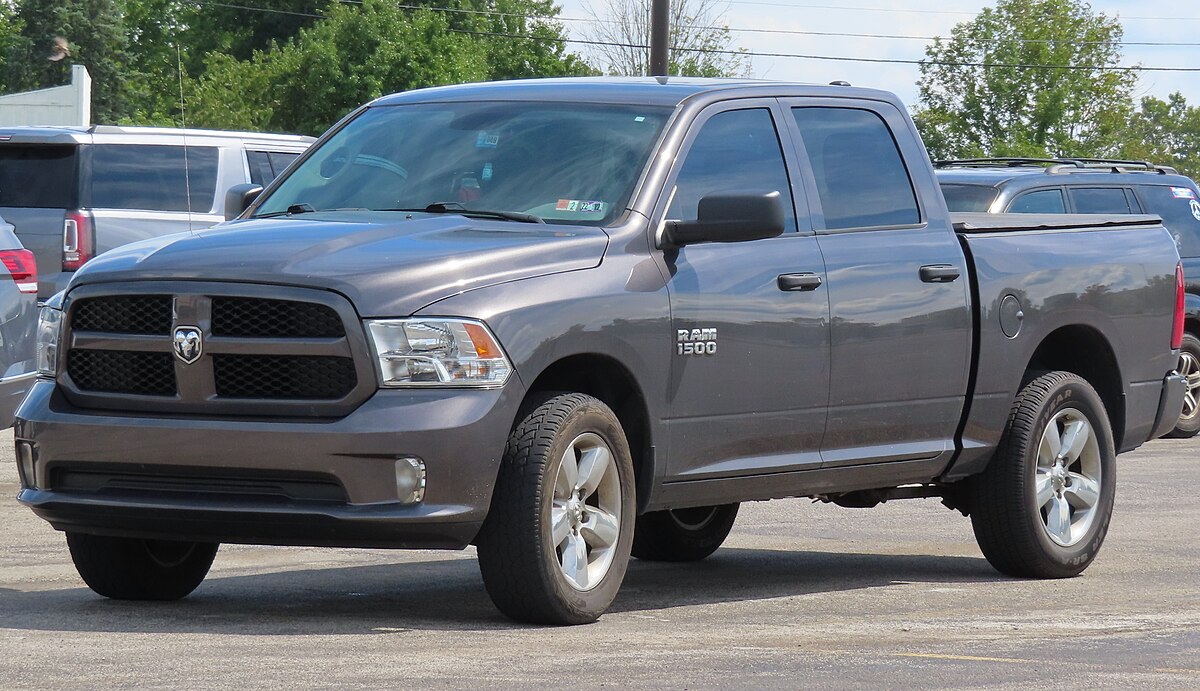
Ram pickup - Wikipedia
Unless all your driving is towing a big trailer (weight and aero) uphill, the savings from the diesel are important. For example, would you rather lose 5 minutes going up a hill 60mph instead of 75mph or lose 20 minutes making an extra fuel stop?
silver billet
Spends too much time on here
- Joined
- Apr 18, 2019
- Messages
- 2,945
- Reaction score
- 2,896
- Points
- 113
They have climbing lanes...because they struggle with uphills.
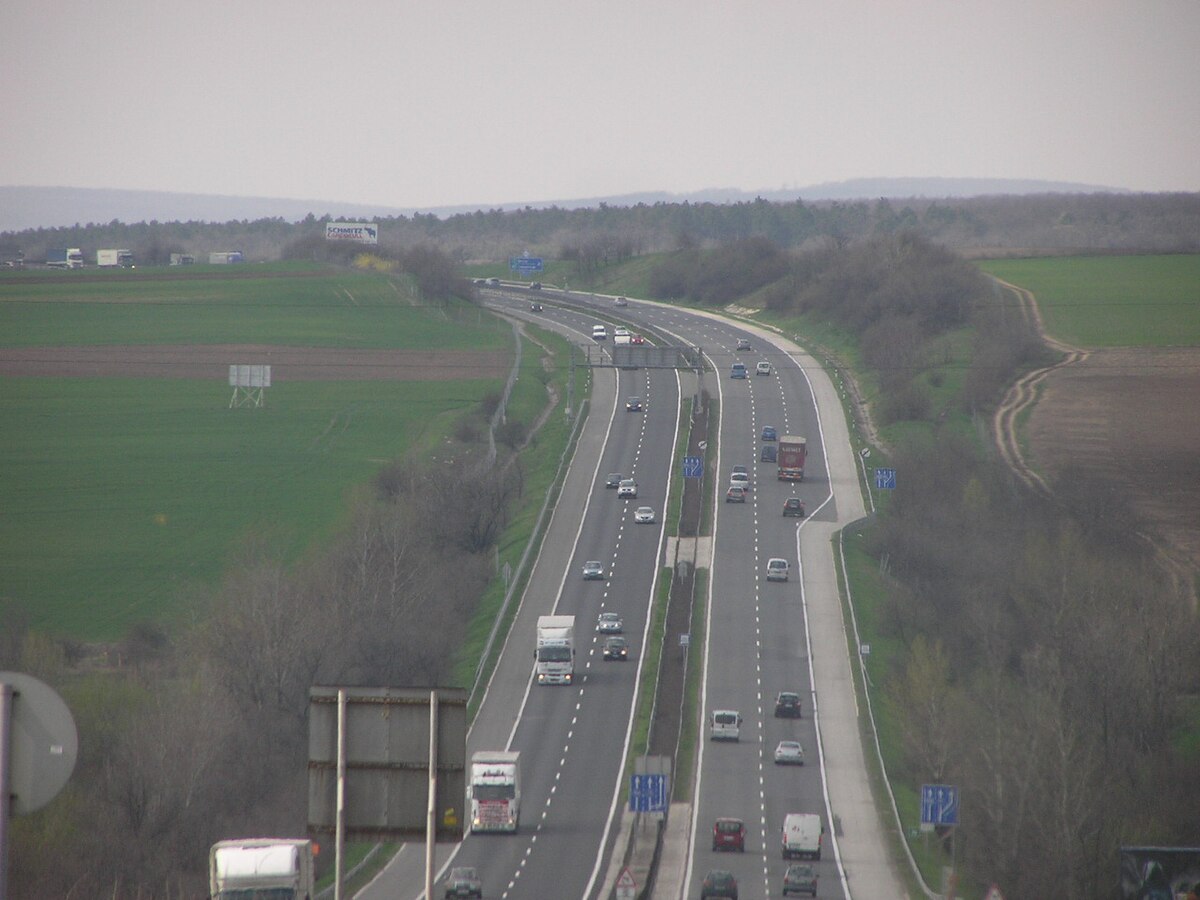
Climbing lane - Wikipedia
en.wikipedia.org
Actually, torque is meaningless. Which would you rather have, 500 lb-ft @1600rpm or 200 lb-ft@ 5000rpm? Hint, one has 190 hp and the other 152hp.
You can calculate tractive effort only knowing hp and vehicle speed...however you would need all the gear ratios and tire diameter to do it with torque.
This is a common misunderstanding fueled by marketing. It stems from an earlier time when torque served as a proxy for the breadth and strength of the power curve.
But what is meaningful is the 2020 1/2-ton pickup diesels all have close to the power and torque ratings of a HD crew-cab dually pickup diesel from 25 years ago. One difference, they rated them for 20k lb trailers in those days, not 30k lb trailers. BTW, the 5.9L Cummings was originally 160hp and 420 lb-ft of torque.

Ram pickup - Wikipedia
en.wikipedia.org
Unless all your driving is towing a big trailer (weight and aero) uphill, the savings from the diesel are important. For example, would you rather lose 5 minutes going up a hill 60mph instead of 75mph or lose 20 minutes making an extra fuel stop?
Lol, they struggle due to the load they're pulling, not because they're lacking in power.
I think you should read up on some of this stuff, because everything I've read online is telling me you're wrong. Such as this article:
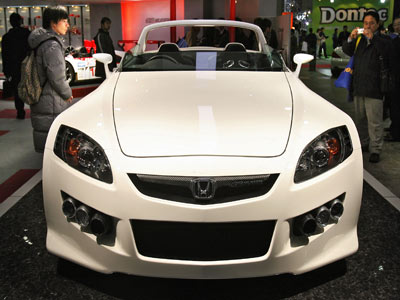
For towing, what's more important, horsepower or torque?
One can easily understand why car enthusiasts spend so much time debating the advantages of torque versus horsepower. The debate boils down to one question: Would you rather simply have the work done or done quickly?
A relevant quote from the last page:
We've spent a lot of time and bandwidth comparing horsepower to torque. What's the verdict? In the end, all the evidence points to torque as being more important than horsepower when it comes to towing. Why? The power at low-end rpm provided by high levels of torque lets you move huge loads without much effort. As stated before, some diesel trucks produce twice as much torque as they do horsepower at near-idle RPM levels -- meaning that they can start pulling something like a trailer or a boat with ease.
Horsepower is important because it allows a car to move faster on the highway and at high rpm. However, if you can't get that trailer off the line, all the horsepower in the world won't help you.
But I'm not going to argue any further. Somebody who makes the claim "torque is meaningless" in a truck forum doesn't sound all that reasonable to me and I doubt I'll change your mind
Lol, they struggle due to the load they're pulling, not because they're lacking in power.
I think you should read up on some of this stuff, because everything I've read online is telling me you're wrong. Such as this article:

For towing, what's more important, horsepower or torque?
One can easily understand why car enthusiasts spend so much time debating the advantages of torque versus horsepower. The debate boils down to one question: Would you rather simply have the work done or done quickly?auto.howstuffworks.com
A relevant quote from the last page:
But I'm not going to argue any further. Somebody who makes the claim "torque is meaningless" in a truck forum doesn't sound all that reasonable to me and I doubt I'll change your mind
Big rigs have very slow turning engine. Some redline at 2200 rpm. It is one of the ways they get their efficiency; low engine speeds have fewer loses to friction, require less stiff valve springs, etc.
The reason they have mega torque numbers is to have 400hp-500hp at less than 2000 rpm. Here is something you may like: https://paccarpowertrain.com/MX-Engine-Brochure.pdf
A graph inside:

They struggle a lot with hills. Without the trailer though, they are faster:
Maybe I’m stating the obvious, but horsepower is simply a function of torque and RPM (H = T x RPM/5252). The two are always interrelated, but there are many ways to interpret this equation.
For example, if you want to increase horsepower, you must increase torque, RPM, or both. If you want to increase horsepower at a given RPM, you must increase torque. And an engine generating high torque at low RPM (like a 3/4-ton truck) may produce exactly the same horsepower as a low-torque, high-revving engine (like a Honda VTEC).
There are lots of approaches to getting this power to the ground...I’ll stop before jumping into that endless debate.
For example, if you want to increase horsepower, you must increase torque, RPM, or both. If you want to increase horsepower at a given RPM, you must increase torque. And an engine generating high torque at low RPM (like a 3/4-ton truck) may produce exactly the same horsepower as a low-torque, high-revving engine (like a Honda VTEC).
There are lots of approaches to getting this power to the ground...I’ll stop before jumping into that endless debate.
its cummins not cummings . love to see a 350 hp gasser pull 80k up 7%They have climbing lanes...because they struggle with uphills.

Climbing lane - Wikipedia
en.wikipedia.org
Actually, torque is meaningless. Which would you rather have, 500 lb-ft @1600rpm or 200 lb-ft@ 5000rpm? Hint, one has 190 hp and the other 152hp.
You can calculate tractive effort only knowing hp and vehicle speed...however you would need all the gear ratios and tire diameter to do it with torque.
This is a common misunderstanding fueled by marketing. It stems from an earlier time when torque served as a proxy for the breadth and strength of the power curve.
But what is meaningful is the 2020 1/2-ton pickup diesels all have close to the power and torque ratings of a HD crew-cab dually pickup diesel from 25 years ago. One difference, they rated them for 20k lb trailers in those days, not 30k lb trailers. BTW, the 5.9L Cummings was originally 160hp and 420 lb-ft of torque.

Ram pickup - Wikipedia
en.wikipedia.org
Unless all your driving is towing a big trailer (weight and aero) uphill, the savings from the diesel are important. For example, would you rather lose 5 minutes going up a hill 60mph instead of 75mph or lose 20 minutes making an extra fuel stop?
Maybe I’m stating the obvious, but horsepower is simply a function of torque and RPM (H = T x RPM/5252). The two are always interrelated, but there are many ways to interpret this equation.
For example, if you want to increase horsepower, you must increase torque, RPM, or both. If you want to increase horsepower at a given RPM, you must increase torque. And an engine generating high torque at low RPM (like a 3/4-ton truck) may produce exactly the same horsepower as a low-torque, high-revving engine (like a Honda VTEC).
There are lots of approaches to getting this power to the ground...I’ll stop before jumping into that endless debate.
Not quite. Yes...give a speed you can calculate a force from a power level. And if you can apply a lever arm to the force it would have a torque. The key here is the force accelerating a vehicle is only dependent on the power and the vehicle's speed. You don't need to know gear ratios or diameters. You don't need the engine speed.
There is an assumption that the gearing will put the engine in the powerband, and in all cases, these numbers are at continuous wide open throttle. Torque would be necessary to know how much an axle or the driveshaft is twisting or the deformation of a gear.
And how flat the power curve is will also count. High-performance gasoline engines typically have a flat torque curve (maintaining constant pressure on the pistons as engine speed increases) with an upwardly sloped power curve. Depending on what the limiting factor is, the peak may or may not be near the redline.
On a diesel, the torque is typically declining...it has declining pressure on the pistons as engine speed increases. This results in a relatively flat power curve...until the torque drops off the planet.
In a maximum performance use of the vehicle. How many times do you really drive foot to the floor for a long period, and how often does that power have a meaningful result unless you are racing or towing uphill? In those applications not having the power counts. The rest of the time the diesel, operating lower engine speeds, always with no air restriction is more efficient. A big deal on a rig burning through fuel at 6mpg or worse. Efficiency is more important than speed up a hill when you burn 20k gallons a year.
I'm a big diesel fan. I see no use to 400hp passenger cars where the driver never gives more than 1/2 throttle or 700hp race cars which can virtually never be opened up on the street, and then only for a second or so. TFL tows a big trailer up a 7% grade, one of the steepest in the country. Is the diesel slow compared to contemporary cars and SUVs? Yes. Is it slow compared to a reasonable duty cycle 90% of the time? No.
This shouldn't be a debate...it really high school level physics.
its cummins not cummings . love to see a 350 hp gasser pull 80k up 7%
Yes...my spelling checker didn't catch it. And 350hp average over the power band in use (typically 30%-50% of the shift point in these trucks at lower speeds) will always beat less power under the curve.
Not quite. Yes...give a speed you can calculate a force from a power level. And if you can apply a lever arm to the force it would have a torque. The key here is the force accelerating a vehicle is only dependent on the power and the vehicle's speed. You don't need to know gear ratios or diameters. You don't need the engine speed.
There is an assumption that the gearing will put the engine in the powerband, and in all cases, these numbers are at continuous wide open throttle. Torque would be necessary to know how much an axle or the driveshaft is twisting or the deformation of a gear.
And how flat the power curve is will also count. High-performance gasoline engines typically have a flat torque curve (maintaining constant pressure on the pistons as engine speed increases) with an upwardly sloped power curve. Depending on what the limiting factor is, the peak may or may not be near the redline.
On a diesel, the torque is typically declining...it has declining pressure on the pistons as engine speed increases. This results in a relatively flat power curve...until the torque drops off the planet.
In a maximum performance use of the vehicle. How many times do you really drive foot to the floor for a long period, and how often does that power have a meaningful result unless you are racing or towing uphill? In those applications not having the power counts. The rest of the time the diesel, operating lower engine speeds, always with no air restriction is more efficient. A big deal on a rig burning through fuel at 6mpg or worse. Efficiency is more important than speed up a hill when you burn 20k gallons a year.
I'm a big diesel fan. I see no use to 400hp passenger cars where the driver never gives more than 1/2 throttle or 700hp race cars which can virtually never be opened up on the street, and then only for a second or so. TFL tows a big trailer up a 7% grade, one of the steepest in the country. Is the diesel slow compared to contemporary cars and SUVs? Yes. Is it slow compared to a reasonable duty cycle 90% of the time? No.
This shouldn't be a debate...it really high school level physics.
Yes...my spelling checker didn't catch it. And 350hp average over the power band in use (typically 30%-50% of the shift point in these trucks at lower speeds) will always beat less power under the curve.
yet torque is meaningless . no one is debating physics. just that torque is part of it.
yet torque is meaningless . no one is debating physics. just that torque is part of it.
Just take the second item of my first post. Give hp, weight, and vehicle speed...calculate acceleration. Without weight, calculate the force accelerating the vehicle.
Now substitute torque for hp, and use the same any other 2 variables of your choice...and make the same calculation.
Now, with the first calculation, use the hp and engine speed to calculate the torque. Then use the transmission and rear axle ratios to calculate the torque around the wheels. Then using wheel diameter or static loaded radius, calculate the force accelerating the vehicle. Are they the same? One required 2 variable and one division. The other required 5 variables and an assortment of operations. Of course, the torque and engine speed could calculate power, the with vehicle speed complete the calc with variables. But then you really just calculating hp.
Here’s a summary that states the concept more eloquently than me:Not quite. Yes...give a speed you can calculate a force from a power level. And if you can apply a lever arm to the force it would have a torque. The key here is the force accelerating a vehicle is only dependent on the power and the vehicle's speed. You don't need to know gear ratios or diameters. You don't need the engine speed.
There is an assumption that the gearing will put the engine in the powerband, and in all cases, these numbers are at continuous wide open throttle. Torque would be necessary to know how much an axle or the driveshaft is twisting or the deformation of a gear.
And how flat the power curve is will also count. High-performance gasoline engines typically have a flat torque curve (maintaining constant pressure on the pistons as engine speed increases) with an upwardly sloped power curve. Depending on what the limiting factor is, the peak may or may not be near the redline.
On a diesel, the torque is typically declining...it has declining pressure on the pistons as engine speed increases. This results in a relatively flat power curve...until the torque drops off the planet.
In a maximum performance use of the vehicle. How many times do you really drive foot to the floor for a long period, and how often does that power have a meaningful result unless you are racing or towing uphill? In those applications not having the power counts. The rest of the time the diesel, operating lower engine speeds, always with no air restriction is more efficient. A big deal on a rig burning through fuel at 6mpg or worse. Efficiency is more important than speed up a hill when you burn 20k gallons a year.
I'm a big diesel fan. I see no use to 400hp passenger cars where the driver never gives more than 1/2 throttle or 700hp race cars which can virtually never be opened up on the street, and then only for a second or so. TFL tows a big trailer up a 7% grade, one of the steepest in the country. Is the diesel slow compared to contemporary cars and SUVs? Yes. Is it slow compared to a reasonable duty cycle 90% of the time? No.
This shouldn't be a debate...it really high school level physics.
Yes...my spelling checker didn't catch it. And 350hp average over the power band in use (typically 30%-50% of the shift point in these trucks at lower speeds) will always beat less power under the curve.
- POWER (the rate of doing WORK) is dependent on TORQUE and RPM.
- TORQUE and RPM are the MEASURED quantities of engine output.
- POWER is CALCULATED from torque and RPM, by the equation I previously provided.
I'm sure everyone in this discussion is a nice person, and we are all here because of our appreciation of the best 1/2-ton pickup ever built. A big contrast with so many discussions where the participants are bound by a common animosity (against this housing development, against a school policy, etc.).
Let me start with 2. Torque is a measured output, rpm is a state such as water temperature or oil pressure. It is measured by some form of brake converting it heat or electric current or twisting a shaft. Torque an rpm are used calculate horsepower. Horsepower is not measured directly. The video below shows a setup (which you can buy, Caleb is pretty reasonable in prices and a is a phenomenal engineer) that measures the torque from the twist of the axle shafts as a race car is running on the track.
Power is better defined as the rate of change of energy. It is easier to see in the metric system where power is expressed in watts and energy in joules. A watt is 1 Joule per second. 395hp is 291 kW. Braking force can also be thought of as power measured in horsepower.
The energy in a moving mass is 1/2 mv². For a 5000lb car moving 60 mph it is 815 kJ.
If you calculated or had the torque at for each smaller increment along the used rpm range you could approximate acceleration more accurately from one rolling speed to another. A standing start is trickier because we generally don't measure the forces during the start. Usually, the dyno measured torque curve doesn't even start at the low engine speeds.
Obviously, there are frictional losses in the drivetrain and aerodynamic losses. It is also possible to calculate the energy produced from knowing the mpg.
BTW, the 2019 Ram 1500 apparently has the lowest drag coefficient ever for a pickup at .357.
The EcoDiesel has about the same hp as the current gasoline V6. For perspective that is about the same power as middle size V8 20-years ago and the same power and torque of an HD diesel form the same era. It is much slower than the current high power V8s. 350hp-450hp were very high numbers. The first Z06 Corvette 385hp in 2001 and 405hp in 2002. Now it has 650hp and isn't even the top model.
The fuel efficiency gap is a bit smaller because of eTorque. Whether it pays for its probable $3000 option price (what Ford charges) in fuel savings is possible. It will also have a big bump in range.
Let me start with 2. Torque is a measured output, rpm is a state such as water temperature or oil pressure. It is measured by some form of brake converting it heat or electric current or twisting a shaft. Torque an rpm are used calculate horsepower. Horsepower is not measured directly. The video below shows a setup (which you can buy, Caleb is pretty reasonable in prices and a is a phenomenal engineer) that measures the torque from the twist of the axle shafts as a race car is running on the track.
Power is better defined as the rate of change of energy. It is easier to see in the metric system where power is expressed in watts and energy in joules. A watt is 1 Joule per second. 395hp is 291 kW. Braking force can also be thought of as power measured in horsepower.
The energy in a moving mass is 1/2 mv². For a 5000lb car moving 60 mph it is 815 kJ.
If you calculated or had the torque at for each smaller increment along the used rpm range you could approximate acceleration more accurately from one rolling speed to another. A standing start is trickier because we generally don't measure the forces during the start. Usually, the dyno measured torque curve doesn't even start at the low engine speeds.
Obviously, there are frictional losses in the drivetrain and aerodynamic losses. It is also possible to calculate the energy produced from knowing the mpg.
BTW, the 2019 Ram 1500 apparently has the lowest drag coefficient ever for a pickup at .357.
The EcoDiesel has about the same hp as the current gasoline V6. For perspective that is about the same power as middle size V8 20-years ago and the same power and torque of an HD diesel form the same era. It is much slower than the current high power V8s. 350hp-450hp were very high numbers. The first Z06 Corvette 385hp in 2001 and 405hp in 2002. Now it has 650hp and isn't even the top model.
The fuel efficiency gap is a bit smaller because of eTorque. Whether it pays for its probable $3000 option price (what Ford charges) in fuel savings is possible. It will also have a big bump in range.
silver billet
Spends too much time on here
- Joined
- Apr 18, 2019
- Messages
- 2,945
- Reaction score
- 2,896
- Points
- 113
I find it funny that you keep ignoring the role of the transmission with diesels. We all know diesels make a ton of power from (say) 1000 to 3500 RPM's and then drop off a cliff. Who cares? The transmission upshifts before that point and the RPM drops right back down into the power range. As long as the transmission is capable of keeping the rpms in the power band, that is a moot point. So let's just ignore that from now on please.
Secondly; while you can spout all the theory you want, the FACT'S are: 3/4 ton, 1 ton, and semi's all use diesel. That's not just for fuel effiency, it's because they make a ton of torque and power to pull heavy loads. The big 3 all offer gassers and diesels in their 1 tons, and guess which engine literally everybody picks when they want maximum pulling power? It ain't the gasser even though it has more HP.
Also just for the record, the pentastar v6 makes 305 hp, the ED v6 makes 240 hp. Guess which engine (in the same truck/configuration) is rated to pull more? Guess which engine most people (other than you I guess) would pick (ignoring cost) to pull a load or daily drive?
I'm having trouble figuring if you're confused or just trolling.
Secondly; while you can spout all the theory you want, the FACT'S are: 3/4 ton, 1 ton, and semi's all use diesel. That's not just for fuel effiency, it's because they make a ton of torque and power to pull heavy loads. The big 3 all offer gassers and diesels in their 1 tons, and guess which engine literally everybody picks when they want maximum pulling power? It ain't the gasser even though it has more HP.
Also just for the record, the pentastar v6 makes 305 hp, the ED v6 makes 240 hp. Guess which engine (in the same truck/configuration) is rated to pull more? Guess which engine most people (other than you I guess) would pick (ignoring cost) to pull a load or daily drive?
I'm having trouble figuring if you're confused or just trolling.
I love it when an engineer comes up with something only using numbers and never in field observations and it doesnt work. been dealing with that for years so I just change it. diesels win the battle over all.I find it funny that you keep ignoring the role of the transmission with diesels. We all know diesels make a ton of power from (say) 1000 to 3500 RPM's and then drop off a cliff. Who cares? The transmission upshifts before that point and the RPM drops right back down into the power range. As long as the transmission is capable of keeping the rpms in the power band, that is a moot point. So let's just ignore that from now on please.
Secondly; while you can spout all the theory you want, the FACT'S are: 3/4 ton, 1 ton, and semi's all use diesel. That's not just for fuel effiency, it's because they make a ton of torque and power to pull heavy loads. The big 3 all offer gassers and diesels in their 1 tons, and guess which engine literally everybody picks when they want maximum pulling power? It ain't the gasser even though it has more HP.
Also just for the record, the pentastar v6 makes 305 hp, the ED v6 makes 240 hp. Guess which engine (in the same truck/configuration) is rated to pull more? Guess which engine most people (other than you I guess) would pick (ignoring cost) to pull a load or daily drive?
I'm having trouble figuring if you're confused or just trolling.
MIT stands for Mother I TriedI find it funny that you keep ignoring the role of the transmission with diesels. We all know diesels make a ton of power from (say) 1000 to 3500 RPM's and then drop off a cliff. Who cares? The transmission upshifts before that point and the RPM drops right back down into the power range. As long as the transmission is capable of keeping the rpms in the power band, that is a moot point. So let's just ignore that from now on please.
Secondly; while you can spout all the theory you want, the FACT'S are: 3/4 ton, 1 ton, and semi's all use diesel. That's not just for fuel effiency, it's because they make a ton of torque and power to pull heavy loads. The big 3 all offer gassers and diesels in their 1 tons, and guess which engine literally everybody picks when they want maximum pulling power? It ain't the gasser even though it has more HP.
Also just for the record, the pentastar v6 makes 305 hp, the ED v6 makes 240 hp. Guess which engine (in the same truck/configuration) is rated to pull more? Guess which engine most people (other than you I guess) would pick (ignoring cost) to pull a load or daily drive?
I'm having trouble figuring if you're confused or just trolling.
Patriot blue but the only thing is that no one likes the patriots . ( Cheaters )I don’t know about anybody else but all I’m worried about is if I should get a White one or a Silver one!!?
Sent from my iPhone using Tapatalk
Users who are viewing this thread
Total: 3 (members: 0, guests: 3)
